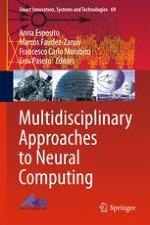This book presents a collection of contributions in the field of Artificial Neural Networks (ANNs). The themes addressed are multidisciplinary in nature, and closely connected in their ultimate aim to identify features from dynamic realistic signal exchanges and invariant machine representations that can be exploited to improve the quality of life of their end users.
Mathematical tools like ANNs are currently exploited in many scientific domains because of their solid theoretical background and effectiveness in providing solutions to many demanding tasks such as appropriately processing (both for extracting features and recognizing) mono- and bi-dimensional dynamic signals, solving strong nonlinearities in the data and providing general solutions for deep and fully connected architectures. Given the multidisciplinary nature of their use and the interdisciplinary characterization of the problems they are applied to – which range from medicine to psychology, industrial and social robotics, computer vision, and signal processing (among many others) – ANNs may provide a basis for redefining the concept of information processing. These reflections are supported by theoretical models and applications presented in the chapters of this book.
This book is of primary importance for: (a) the academic research community, (b) the ICT market, (c) PhD students and early-stage researchers, (d) schools, hospitals, rehabilitation and assisted-living centers, and (e) representatives of multimedia industries and standardization bodies.
